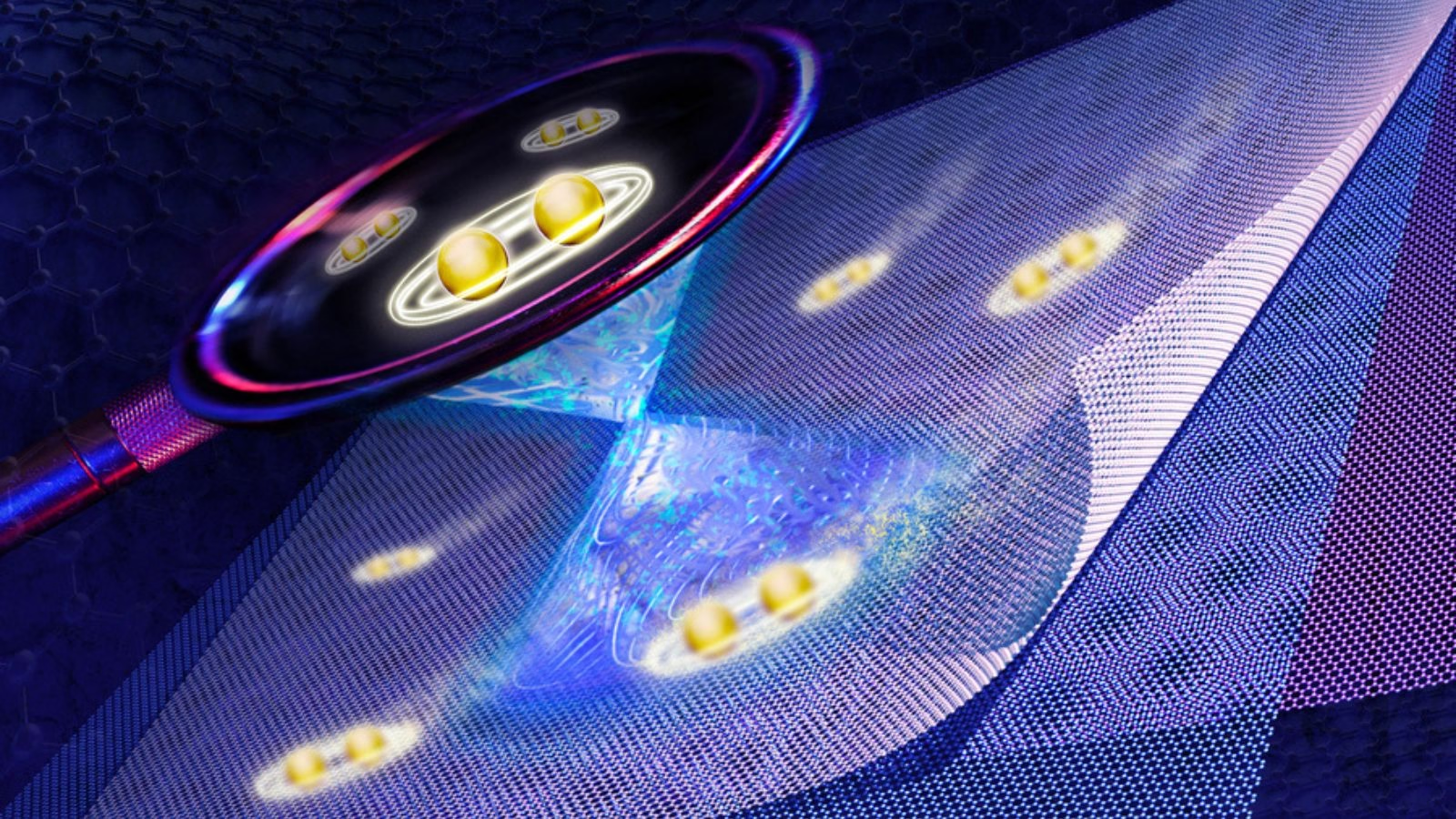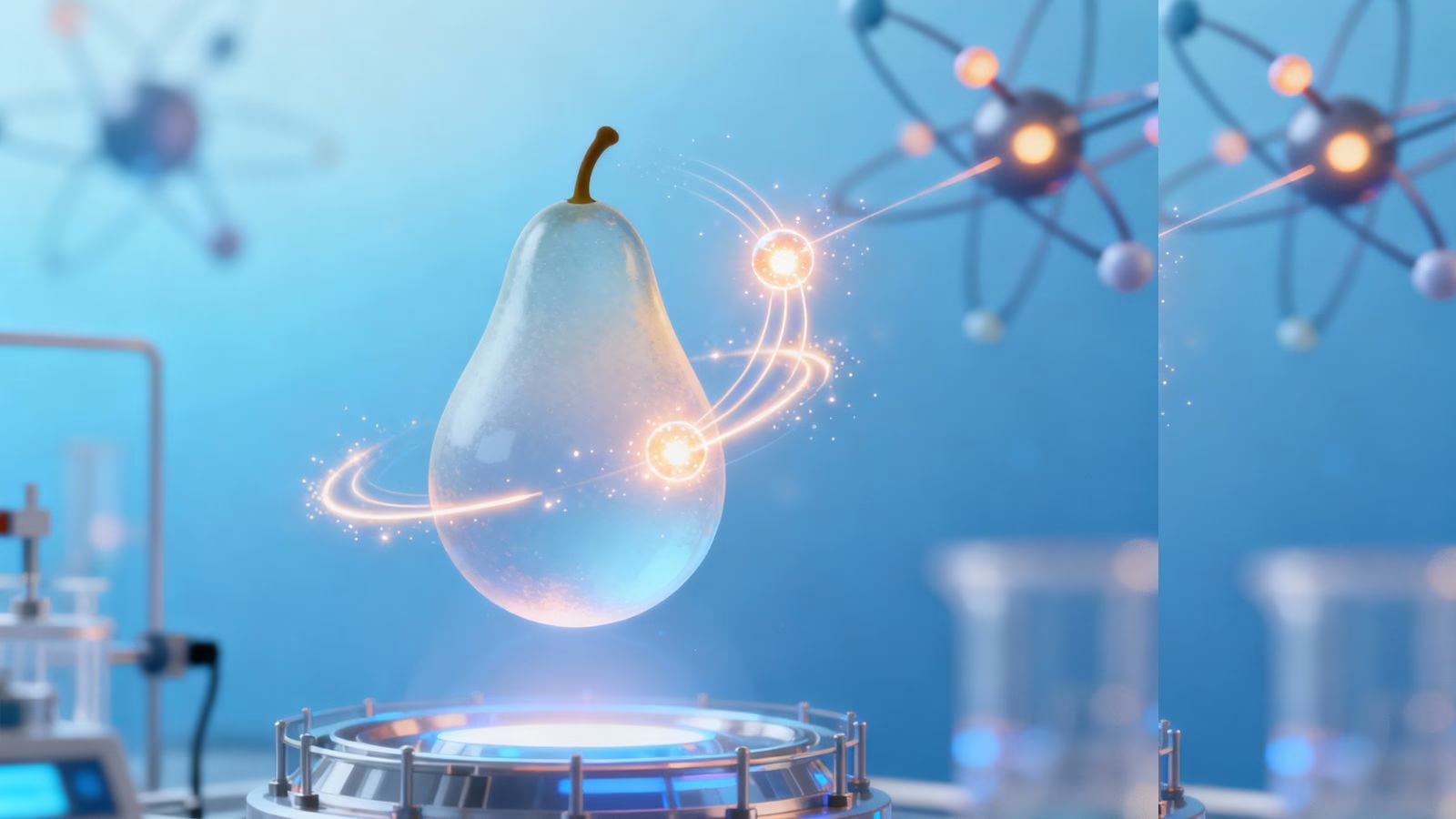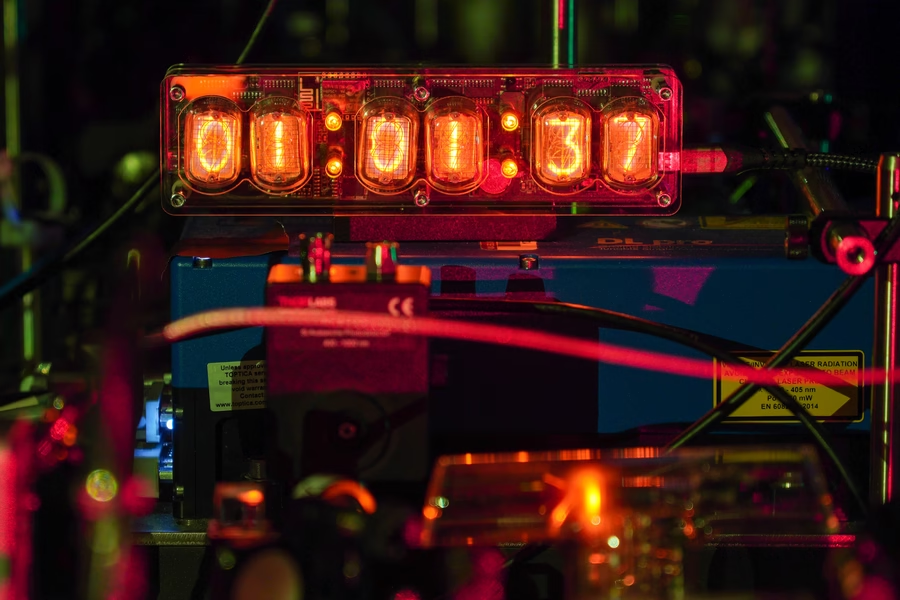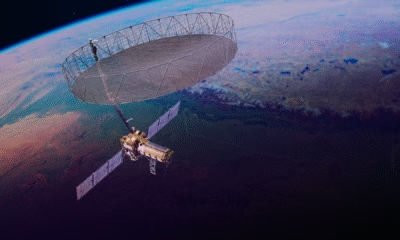Space & Physics
How Shyam Gollakota is revolutionizing mobile systems and healthcare with technology
His research is already opening up new possibilities for battery-free networks, including underwater Wi-Fi, powerline communication, and even wireless cameras

Prof. Shyam Gollakota, Washington Research Foundation and Thomas J. Cable Endowed Professor at the Paul G. Allen School of Computer Science and Engineering at the University of Washington, has been honored with the Infosys Prize 2024 in Engineering and Computer Science for his groundbreaking contributions to mobile systems and healthcare. His research, which spans multiple engineering domains, has had a profound societal impact, particularly in areas like smartphone-based healthcare tools, battery-free communication, and the augmentation of human auditory perception with artificial intelligence.
Prof. Gollakota’s innovations have not only advanced the field of mobile systems but have also provided scalable, affordable solutions to some of the world’s most pressing challenges. His work is reshaping how we think about the intersection of technology and healthcare, and his pioneering research promises to improve the lives of millions globally, especially in low- and middle-income countries.
At the heart of Prof. Gollakota’s innovations is his ability to repurpose existing technologies to address real-world challenges
“His work on mobile and wireless communications is game-changing. Particularly impressive is his work on active sonar systems for physiological sensing, battery-free communications, and the use of AI to selectively tailor acoustic landscapes. These innovations will continue to benefit humanity for years to come,” stated Jury Chair, Infosys Prize 2024.
Transforming Mobile Devices into Healthcare Tools
At the heart of Prof. Gollakota’s innovations is his ability to repurpose existing technologies to address real-world challenges. One of his most remarkable contributions is his development of contactless physiological sensing using smartphones. By transforming mobile devices into active sonar systems, Gollakota’s research leverages the microphones and speakers in smartphones—components that are ubiquitous in today’s devices—to detect subtle physiological movements such as breathing.
This novel approach has significant implications for mobile health, particularly in resource-constrained areas where access to traditional medical equipment is limited. According to him, the ability to perform contactless physiological sensing with just a smartphone has the potential to revolutionize medical diagnostics, and make healthcare more accessible to billions of people around the world.
Battery-Free Communication: A Leap Forward in Sustainability
In a world increasingly concerned with energy efficiency and sustainability, Prof. Gollakota’s work on battery-free communication stands out as a pioneering achievement. He developed a technique called ambient backscatter, where wireless devices communicate by reflecting existing radio signals, rather than generating their own. This method drastically reduces energy consumption, allowing devices to communicate without the need for batteries.
This research is already opening up new possibilities for battery-free networks, including underwater Wi-Fi, powerline communication, and even wireless cameras. Battery-free devices could transform industries ranging from environmental monitoring to the Internet of Things (IoT). As per his visions, we are creating a future where energy-efficient, sustainable communication systems will be a part of our everyday lives.
Augmenting Human Auditory Perception with AI
In a truly visionary move, Prof. Gollakota’s research also explores how artificial intelligence (AI) can be used to augment human auditory perception. His work in this field enables people to program their acoustic environments, allowing them to focus on specific sounds or filter out others based on semantic descriptions. This breakthrough could have significant applications in hearing aids, earbuds, and assistive listening devices, where users can customize their listening experiences.
Battery-free devices could transform industries ranging from environmental monitoring to the Internet of Things (IoT)
By using AI to isolate and manipulate soundscapes in real time, Prof. Gollakota’s research is poised to improve quality of life for millions, offering individuals greater control over their auditory experiences. This technology will soon be commonplace in consumer electronics, giving people a level of control over their hearing that was once thought impossible.
A Thought Leader and Innovator
Prof. Shyam Gollakota’s career trajectory has been exceptional. A graduate of IIT Madras and MIT, where he received his Ph.D., Gollakota has quickly risen to prominence as a thought leader in mobile systems, machine learning, and human-computer interaction. He has received numerous accolades, including the National Science Foundation CAREER Award, the Alfred P. Sloan Fellowship, and the ACM Grace Murray Hopper Award. His recognition on MIT Technology Review’s 35 Innovators Under 35 list and twice on Forbes’ 30 Under 30 further cements his status as one of the brightest minds in his field.
As the director of the Mobile Intelligence Lab at the University of Washington, Gollakota is at the forefront of cutting-edge research in mobile health, networking, and battery-free computing. His work has already led to the creation of novel technologies that push the boundaries of what mobile systems can achieve, all with the potential to address key societal challenges.
The Future of Computing
Looking to the future, Prof. Gollakota’s research will continue to revolutionize mobile systems and human-computer interaction. His work in programmable sound, battery-free communication, and contactless diagnostics lays the foundation for the next generation of computing technologies. These innovations promise to reshape industries, improve global health, and enhance human capabilities.
With his visionary ideas and transformative research, Prof. Shyam Gollakota’s work will undoubtedly continue to have a profound impact on both the world of technology and the lives of people worldwide.
Space & Physics
MIT Pioneers Real-Time Observation of Unconventional Superconductivity in Magic-Angle Graphene
Physicists have directly observed unconventional superconductivity in magic-angle twisted tri-layer graphene using a new experimental platform, revealing a unique pairing mechanism

MIT physicists have unveiled compelling direct evidence for unconventional superconductivity in “magic-angle” twisted tri-layer graphene—an atomically engineered material that could reimagine the future of energy transport and quantum technologies. Their new experiment marks a pivotal step forward, offering a fresh perspective on how electrons synchronize in precisely stacked two-dimensional materials, potentially laying the groundwork for next-generation superconductors that function well above current temperature limits.
Instead of looking merely at theoretical possibilities, the MIT team built a novel platform that lets researchers visualize the superconducting gap “as it emerges in real-time within 2D materials,” said co-lead author Shuwen Sun in a media statement. This gap is crucial, reflecting how robust the material’s superconducting state is during temperature changes—a key indicator for practical applications.
What’s striking, said Jeong Min Park, study co-lead author, is that the superconducting gap in magic-angle graphene differs starkly from the smooth, uniform profile seen in conventional superconductors. “We observed a V-shaped gap that reveals an entirely new pairing mechanism—possibly driven by the electrons themselves, rather than crystal vibrations,” Park said. Such direct measurement is a “first” for the field, giving scientists a more refined tool for identifying and understanding unconventional superconductivity.
Senior author Pablo Jarillo-Herrero emphasized that their method could help crack the code behind room-temperature superconductors: “This breakthrough may trigger deeper insights not just for graphene, but for the entire class of twistronic materials. Imagine grids and quantum computers that operate with zero energy loss—this is the holy grail we’re moving toward,” Jarillo-Herrero said in the MIT release.
Collaborators included scientists from Japan’s National Institute for Materials Science, broadening the impact of the research. The discovery builds on years of progress since the first magic-angle graphene experiments in 2018, opening what many now call the “twistronics” era—a field driven by stacking and twisting atom-thin materials to unlock uniquely quantum properties.
Looking ahead, the team plans to expand its analysis to other ultra-thin structures, hoping to map out electronic behavior not only for superconductors, but for a wider range of correlated quantum phases. “We can now directly observe electron pairs compete and coexist with other quantum states—this could allow us to design new materials from the ground up,” said Park in her public statement.
The research underscores the value of visualization in fundamental physics, suggesting that direct observation may be the missing link to controlling quantum phenomena for efficient, room-temperature technology.
Space & Physics
Atoms Speak Out: Physicists Use Electrons as Messengers to Unlock Secrets of the Nucleus
Physicists at MIT have devised a table-top method to peer inside an atom’s nucleus using the atom’s own electrons

Physicists at MIT have developed a pioneering method to look inside an atom’s nucleus — using the atom’s own electrons as tiny messengers within molecules rather than massive particle accelerators.
In a study published in science, the researchers demonstrated this approach using molecules of radium monofluoride, which pair a radioactive radium atom with a fluoride atom. The molecules act like miniature laboratories where electrons naturally experience extremely strong electric fields. Under these conditions, some electrons briefly penetrate the radium nucleus, interacting directly with protons and neutrons inside. This rare intrusion leaves behind a measurable energy shift, allowing scientists to infer details about the nucleus’ internal structure.
The team observed that these energy shifts, though minute — about one millionth of the energy of a laser photon — provide unambiguous evidence of interactions occurring inside the nucleus rather than outside it. “We now have proof that we can sample inside the nucleus,” said Ronald Fernando Garcia Ruiz, the Thomas A. Franck Associate Professor of Physics at MIT, in a statement. “It’s like being able to measure a battery’s electric field. People can measure its field outside, but to measure inside the battery is far more challenging. And that’s what we can do now.”
Traditionally, exploring nuclear interiors required kilometer-long particle accelerators to smash high-speed beams of electrons into targets. The MIT technique, by contrast, achieves similar insight with a table-top molecular setup. It makes use of the molecule’s natural electric environment to magnify these subtle interactions.
The radium nucleus, unlike most which are spherical, has an asymmetric “pear” shape that makes it a powerful system for studying violations of fundamental physical symmetries — phenomena that could help explain why the universe contains far more matter than antimatter. “The radium nucleus is predicted to be an amplifier of this symmetry breaking, because its nucleus is asymmetric in charge and mass, which is quite unusual,” Garcia Ruiz explained.
To conduct their experiments, the researchers produced radium monofluoride molecules at CERN’s Collinear Resonance Ionization Spectroscopy (CRIS) facility, trapped and cooled them in laser-guided chambers, and then measured laser-induced energy transitions with extreme precision. The work involved MIT physicists Shane Wilkins, Silviu-Marian Udrescu, and Alex Brinson, alongside international collaborators.
“Radium is naturally radioactive, with a short lifetime, and we can currently only produce radium monofluoride molecules in tiny quantities,” said Wilkins. “We therefore need incredibly sensitive techniques to be able to measure them.”
As Udrescu added, “When you put this radioactive atom inside of a molecule, the internal electric field that its electrons experience is orders of magnitude larger compared to the fields we can produce and apply in a lab. In a way, the molecule acts like a giant particle collider and gives us a better chance to probe the radium’s nucleus.”
Going forward, the MIT team aims to cool and align these molecules so that the orientation of their pear-shaped nuclei can be controlled for even more detailed mapping. “Radium-containing molecules are predicted to be exceptionally sensitive systems in which to search for violations of the fundamental symmetries of nature,” Garcia Ruiz said. “We now have a way to carry out that search”
Space & Physics
Physicists Double Precision of Optical Atomic Clocks with New Laser Technique
MIT researchers develop a quantum-enhanced method that doubles the precision and stability of optical atomic clocks, paving the way for portable, ultra-accurate timekeeping.

MIT physicists have unveiled a new technique that could significantly improve the precision and stability of next-generation optical atomic clocks, devices that underpin everything from mobile transactions to navigation apps. In a recent media statement, the MIT team explained: “Every time you check the time on your phone, make an online transaction, or use a navigation app, you are depending on the precision of atomic clocks. An atomic clock keeps time by relying on the ‘ticks’ of atoms as they naturally oscillate at rock-steady frequencies.”
Current atomic clocks rely on cesium atoms tracked with lasers at microwave frequencies, but scientists are advancing to clocks based on faster-ticking atoms like ytterbium, which can be tracked with lasers at higher, optical frequencies and discern intervals up to 100 trillion times per second.
A research group at MIT, led by Vladan Vuletić, the Lester Wolfe Professor of Physics, detailed that their newly developed method harnesses a laser-induced “global phase” in ytterbium atoms and boosts this effect using quantum amplification. Vuletić stated, “We think our method can help make these clocks transportable and deployable to where they’re needed.” The approach, called global phase spectroscopy, doubles the precision of an optical atomic clock, enabling it to resolve twice as many ticks per second compared to standard setups, and promises further gains with increasing atom counts.
The technique could pave the way for portable optical atomic clocks able to measure all manner of phenomena in various locations. Vuletić summarized the broader scientific ambitions: “With these clocks, people are trying to detect dark matter and dark energy, and test whether there really are just four fundamental forces, and even to see if these clocks can predict earthquakes.”
The MIT team has previously demonstrated improved clock precision by quantumly entangling hundreds of ytterbium atoms and using time reversal tricks to amplify their signals. Their latest advance applies these methods to much faster optical frequencies, where stabilizing the clock laser has always been a major challenge. “When you have atoms that tick 100 trillion times per second, that’s 10,000 times faster than the frequency of microwaves,” said Vuletić in the statement. Their experiments revealed a surprisingly useful “global phase” information about the laser frequency, previously thought irrelevant, unlocking the potential for even greater accuracy.
The research, led by Vuletić and joined by Leon Zaporski, Qi Liu, Gustavo Velez, Matthew Radzihovsky, Zeyang Li, Simone Colombo, and Edwin Pedrozo-Peñafiel of the MIT-Harvard Center for Ultracold Atoms, was published in Nature. They believe the technical benefits of the new method will make atomic clocks easier to run and enable stable, transportable clocks fit for future scientific exploration, including earthquake prediction, fundamental physics, and global time standards.
-

 Space & Physics6 months ago
Space & Physics6 months agoIs Time Travel Possible? Exploring the Science Behind the Concept
-

 Know The Scientist6 months ago
Know The Scientist6 months agoNarlikar – the rare Indian scientist who penned short stories
-

 Know The Scientist5 months ago
Know The Scientist5 months agoRemembering S.N. Bose, the underrated maestro in quantum physics
-

 Space & Physics3 months ago
Space & Physics3 months agoJoint NASA-ISRO radar satellite is the most powerful built to date
-

 Society5 months ago
Society5 months agoAxiom-4 will see an Indian astronaut depart for outer space after 41 years
-

 Society5 months ago
Society5 months agoShukla is now India’s first astronaut in decades to visit outer space
-

 Society5 months ago
Society5 months agoWhy the Arts Matter As Much As Science or Math
-

 Earth5 months ago
Earth5 months agoWorld Environment Day 2025: “Beating plastic pollution”












